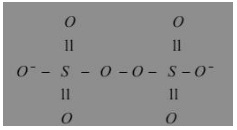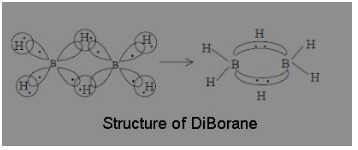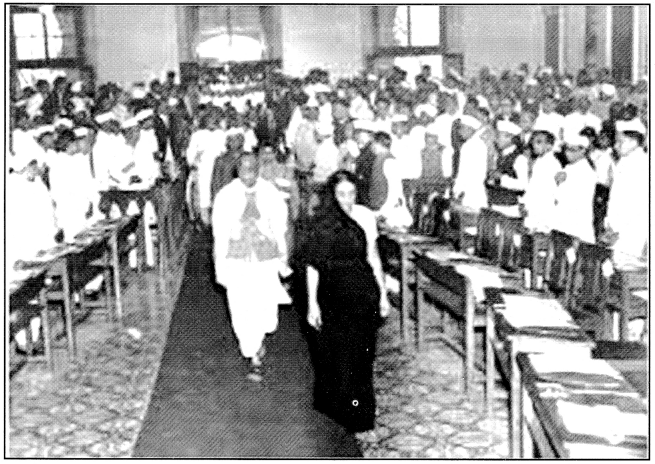MCQ Questions for Class 11 Chemistry Chapter 9 Hydrogen with Answers
Students are advised to practice the NCERT MCQ Questions for Class 11 Chemistry Chapter 9 Hydrogen with Answers Pdf free download is available here. MCQ Questions for Class 11 Chemistry with Answers are prepared as per the Latest Exam Pattern. Students can solve these Hydrogen Class 11 MCQs Questions with Answers and assess their preparation level.
Hydrogen Class 11 MCQs Questions with Answers
Solving the Hydrogen Multiple Choice Questions of Class 11 Chemistry Chapter 9 MCQ can be of extreme help as you will be aware of all the concepts. These MCQ Questions on Hydrogen Class 11 with answers pave for a quick revision of the Chapter thereby helping you to enhance subject knowledge. Have a glance at the MCQ of Chapter 9 Chemistry Class 11 and cross-check your answers during preparation.
Question 1.
When water is dropped over sodium peroxide, the colourless gas produced is:
(a) DiNitrogen
(b) DiOxygen
(c) DiHydrogen
(d) Hydrogen Peroxide
Answer
Answer: (b) DiOxygen
Explanation:
When sodium peroxide dissolves in water:
2Na2O2 + 2H2O → 4NaOH + O2
Question 2.
The atomic weights of isotopes of all element are different due to different number of __________.
(a) Protons
(b) Electrons
(c) Neutrons
(d) None of Above
Answer
Answer: (c) Neutrons
Explanation:
Isotopes are variants of a particular chemical element which differ in neutron number, and consequently in nucleon number. All isotopes of a given element have the same number of protons but different numbers of neutrons in each atom.
Question 3.
During the reaction of natural gas and steam the catalyst used is
(a) Fe
(b) Zn
(c) Ni
(d) Cr
Answer
Answer: (c) Ni
Explanation:
Steam reforming of natural gas is the most common method of producing commercial bulk hydrogen at about 95% of the world production of 500 billion m3 in 1998, or 70 million tonnes by 2018.Hydrogen is used in the industrial synthesis of ammonia and other chemicals. At high temperatures (700 – 1100°C) and in the presence of a metal-based catalyst (nickel), steam reacts with methane to yield carbon monoxide and hydrogen.
CH4 + H2O ⇌ CO + 3 H2
Question 4.
Cavendish in 766 discovered.
(a) Nitrogen
(b) Oxygen
(c) Hydrogen
(d) Helium
Answer
Answer: (c) Hydrogen
Explanation:
Henry Cavendish FRS was an English natural philosopher, scientist, and an important experimental and theoretical chemist and physicist. He is noted for his discovery of hydrogen, which he termed “inflammable air”. He described the density of inflammable air, which formed water on combustion, in a 1766 paper, On Factitious Airs. Antoine Lavoisier later reproduced Cavendishs experiment and gave the element its name.
Question 5.
Dihydrogen gas may be prepared by heating caustic soda on
(a) Cu
(b) Zn
(c) Na
(d) Ag
Answer
Answer: (b) Zn
Explanation:
When a base reacts with a metal salt in hydrogen gas is formed. In this reaction metal is zinc & base is Sodium hydroxide. When sodium hydroxide solution is heated with zinc granules then Sodium zincate and hydrogen gas are formed.
2NaOH (aq) + Zn(s) → Na2ZnO2 (aq)+ H2(g)
The salt formed by the reaction between a base and a metal, the metal is present as a part of the Negative ion. In the sodium zincate salt (Na2ZnO2) formed by the reaction between Sodium Hydroxide and Zinc metal, the zinc metal is present at a part of a negative ions , zincate ion (ZnO2-2 ) All the metals do not react with bases to form salt and hydrogen gas. The main product formed in this reaction is sodium zincate (Na2ZnO2)
Question 6.
Hydrogen set free at the time of its preparation from its compound in atomic form are called _________.
(a) Nascent Molecular Hydrogen
(b) Nascent Atomic Hydride
(c) Both (1) and (2)
(d) Nascent Hydrogen
Answer
Answer: (a) Nascent Molecular Hydrogen
Explanation:
The hydrogen set free at the time of its preparation from its compounds is also in atom from and is commonly known nascent hydrogen. The newly born hydrogen is in atomic form that is why it is called nascent hydrogen.
Question 7.
Which substance does not speed up decomposition of H2O2
(a) Glycerol
(b) Pt
(c) Gold
(d) MnO2
Answer
Answer: (b) Pt
Explanation:
Glycerol, phosphoric acid or acetanilide is added to H2O2 to check its decomposition.
Question 8.
Water shows anomalous behavior between
(a) 0 to 4 °C
(b) 0 to 5 °C
(c) 0 to -4 °C
(d) 4 to 0 °C
Answer
Answer: (a) 0 to 4 °C
Explanation:
Water show a wide range of anomalies compared to similar liquids or hydrides of other group 16 elements. One of the most talked-about anomalies is the formation of ice from liquid water and how the density changes when we cool the water.
O is a small atom and highly electronegative compared to Hydrogen. So O attracts the covalent clouds of O-H towards itself, thus making water a polar molecule. The hydrogen bonding in water molecules causes high boiling point and liquid state compared to other hydrides of group 16.
When we cool water from higher temperature, the density steadily decreases. At 4 degree C it is the highest. But below 4 degree C, The H-bonds break between the molecules and the molecules get drifted further apart, the volume increases and density decreases. The crystalline form of water is ice. At atmospheric pressure ice crystallises in the hexagonal form, but at very low temperatures it condenses to cubic form leaving gap between the structures, thus increasing the volume again.
Density of ice is less than that of water. Therefore, an ice cube floats on water. In winter season ice formed on the surface of a lake provides thermal insulation which ensures the survival of the aquatic life.
Question 9.
Which of the following pair of substance will not evolve H2 gas
(a) Iron and aqueous H2SO4
(b) Copper and HCl(aq)
(c) Sodium and Ethanol
(d) Iron and Steam
Answer
Answer: (b) Copper and HCl(aq)
Explanation:
Copper is a noble metal. As it lies below hydrogen in the electrochemical series. Therefore it cant displace hydrogen from dilute HCl. While iron and sodium lie above hydrogen in the electrochemical series. so they can liberate H2 either from steam or H2SO4 solution.
Fe + H2SO4 ↔ FeSO4 + H2
3Fe + 4H2O (steam) ↔ Fe3O4 + 4H2
Cu + HCl(g) → No reaction
2Na + 2C2H5OH → 2C2H5ONa + H2
Question 10.
Tritium __________ radio active isotope.
(a) Beta-Emitting
(b) Alpha – Emitting
(c) Gamma-Emitting
(d) None of the Above
Answer
Answer: (a) Beta-Emitting
Explanation:
Tritium is a beta-emitting radioactive isotope of hydrogen. Its nucleus consists of one proton and two neutrons, making it three times as heavy as a hydrogen nucleus (with its one proton) and one-and-a-half times as heavy as deuterium (which contains one proton and only one neutron).
Question 11.
The maximum density of water at 40C is :
(a) 1.0 g / cm³
(b) 0.998 g / cm³
(c) 0.918 g / cm³
(d) 1.2 g / dm³
Answer
Answer: (a) 1.0 g / cm³
Explanation:
Water never has an absolute density because its density varies with temperature. Water has its maximum density of 1 g/cm³ at 4 degrees Celsius. When the temperature changes from either greater or less than 4 degrees, the density will become less then 1 g/cm³. Water has the maximum density of 1 g/cm³ only when it is pure water. Other factors affect waters density such as whether it is tap or fresh water or salt water. These variations of water changes its density because whats in the water has its own density.
Question 12.
Water gas is mixture of hydrogen H2 and
(a) CO
(b) CO2
(c) Cl2
(d) SO2
Answer
Answer: (a) CO
Explanation:
Water gas is a combustion fuel containing carbon monoxide (CO) and hydrogen gas (H2). Water gas is made by passing steam over heated hydrocarbons.
Question 13.
The volume of oxygen gas evolved at STP by decomposition of 0.68 g “20 volume” hydrogen peroxide is:
(a) 112 ml
(b) 224 ml
(c) 56 ml
(d) 336 ml
Answer
Answer: (b) 224 ml
Explanation:
2H2O2 → 2H2O + O2
2 × 34 g = 22400 ml
As 2 × 34 g = 68 g of H2O2 liberates
22400 ml O2 at STP
Therefore, 0.68 g of H2O2 liberates
= (0.68 × 22400)/(68) = 224 ml
Question 14.
Which of the following statements regarding hydrogen peroxide is/are incorrect?
(a) As aerating agent in production of sponge rubber
(b) As an antichlor
(c) For restoring white colour of blackened lead painting
(d) All of the above
Answer
Answer: (d) All of the above
Explanation:
H2O2 show all these properties
Question 15.
_______ on water decolourises H2O2
(a) O3
(b) Acidic KMnO4 solution
(c) Black Suspension of Lead Sulphide( PbS)
(d) None of these
Answer
Answer: (c) Black Suspension of Lead Sulphide(PbS)
Explanation:
Lead sulphide (black suspension) on reaction with hydrogen peroxide forms lead sulphate and water. Lead sulphate as well as water are colourless, therefore lead sulphite decolourises on addition of hydrogen peroxide.
PbS(s) + 4H2O2 (aq) → PbSO4 (s) + 4H2O (aq)
Question 16.
The number of electron hydrogen contains in its K shell is
(a) 1
(b) 2
(c) 3
(d) 4
Answer
Answer: (a) 1
Explanation:
The maximum number of electrons present in a shell is given by the formula 2n², where “n” is the orbit number or energy level index, 1, 2, 3 , …… Hence the maximum number of electrons in different shells are as follows:
First orbit or K-shell will be = 2 × 12 = 2
Hydrogen (H), lithium (Li), and sodium (Na), all have one electron in their outermost shells. This means that they can achieve a stable configuration and a filled outer shell by donating or losing an electron.
Question 17.
On shaking H2O2 with acidified potassium dichromate and ether, ethereal layer becomes:
(a) Green
(b) Red
(c) Blue
(d) Brown
Answer
Answer: (c) Blue
Explanation:
This is due to the formation of CrO5
K2Cr2O7 + H2SO4 + 4H2O2 → K2SO4 + 2CrO5 + 5H2O
So it is Blue
Question 18.
Hydrogen atom contains one electron. But, the spectrum of hydrogen contains number of lines.
(a) Single
(b) Multiple
(c) Cannot be determined
(d) None of the Above
Answer
Answer: (b) Multiple
Explanation:
In a sample of hydrogen gas, the number of hydrogen molecules is present. These molecules dissociate and produce hydrogen atoms when heated. Each hydrogen atom contains one electron. The hydrogen atoms absorb different amounts of energy and go to different excited states. From there, they take different paths and come back to ground state. Since different paths are associated with different energies, different spectral lines are formed in the spectrum.
Question 19.
H2O2 used in rocket has the concentration:
(a) 50%
(b) 90%
(c) 70%
(d) 30%
Answer
Answer: (b) 90%
Explanation:
H2O2 is used as an oxidant for rocket fuel. Usually, 90% concentration of H2O2 is used.
Question 20.
Hydrogen has isotopes
(a) 2
(b) 3
(c) 4
(d) 5
Answer
Answer: (c) 4
Explanation:
Hydrogen has three main isotopes; Protium (1H), deuterium (²H) and tritium (³H). These isotopes form naturally in nature. Protium and deuterium are stable. Tritium is radioactive and has a half-life of about 12 years. Scientists have created four other hydrogen isotopes (4H to 7H), but these isotopes are very unstable and do not exist naturally.
The main isotopes of hydrogen are unique because they are the only isotopes that have a name.
Hope the information shared regarding the NCERT MCQ Questions for Class 11 Chemistry Chapter 9 Hydrogen with Answers Pdf free download is true and genuine as far as our knowledge is concerned. If you feel any information regarding CBSE Class 11 Chemistry Hydrogen MCQs Multiple Choice Questions with Answers is missing do reach us and we will look into it and add it accordingly.
MCQ Questions for Class 11 Chemistry Chapter 9 Hydrogen with Answers Read More »







